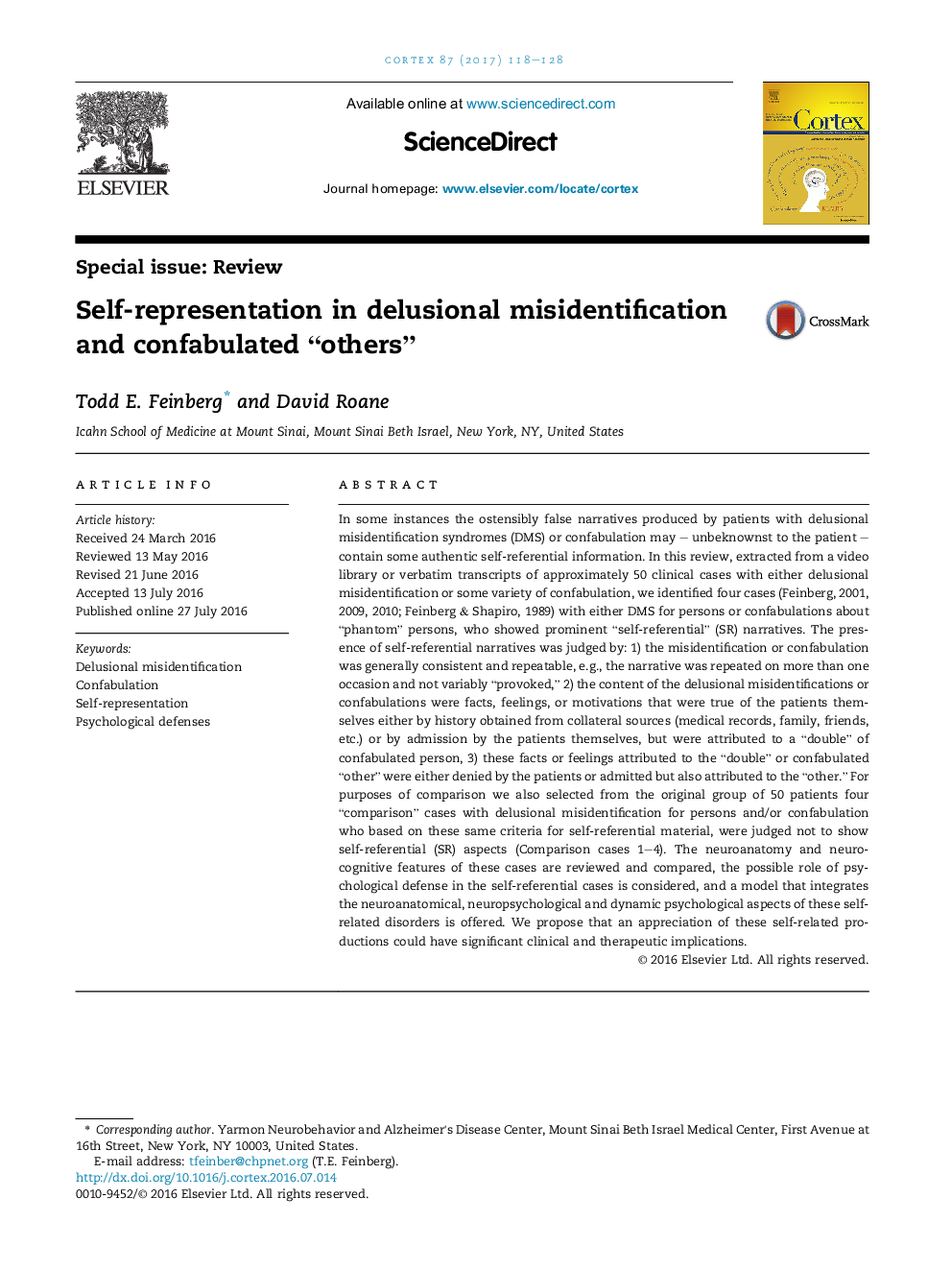| Article ID | Journal | Published Year | Pages | File Type |
|---|---|---|---|---|
| 5044712 | Cortex | 2017 | 11 Pages |
In some instances the ostensibly false narratives produced by patients with delusional misidentification syndromes (DMS) or confabulation may - unbeknownst to the patient - contain some authentic self-referential information. In this review, extracted from a video library or verbatim transcripts of approximately 50 clinical cases with either delusional misidentification or some variety of confabulation, we identified four cases (Feinberg, 2001, 2009, 2010; Feinberg & Shapiro, 1989) with either DMS for persons or confabulations about “phantom” persons, who showed prominent “self-referential” (SR) narratives. The presence of self-referential narratives was judged by: 1) the misidentification or confabulation was generally consistent and repeatable, e.g., the narrative was repeated on more than one occasion and not variably “provoked,” 2) the content of the delusional misidentifications or confabulations were facts, feelings, or motivations that were true of the patients themselves either by history obtained from collateral sources (medical records, family, friends, etc.) or by admission by the patients themselves, but were attributed to a “double” of confabulated person, 3) these facts or feelings attributed to the “double” or confabulated “other” were either denied by the patients or admitted but also attributed to the “other.” For purposes of comparison we also selected from the original group of 50 patients four “comparison” cases with delusional misidentification for persons and/or confabulation who based on these same criteria for self-referential material, were judged not to show self-referential (SR) aspects (Comparison cases 1-4). The neuroanatomy and neurocognitive features of these cases are reviewed and compared, the possible role of psychological defense in the self-referential cases is considered, and a model that integrates the neuroanatomical, neuropsychological and dynamic psychological aspects of these self-related disorders is offered. We propose that an appreciation of these self-related productions could have significant clinical and therapeutic implications.
